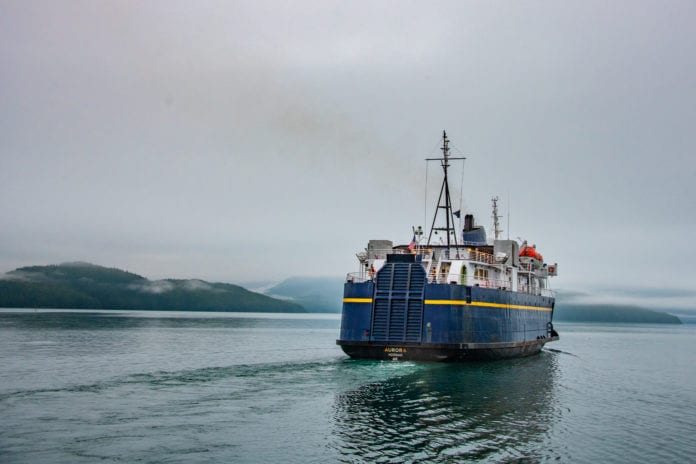
State Transportation Department officials last week told legislators the ferry system needed to quickly hire at least 166 new crew in order to meet minimum staffing levels for this summer’s schedule starting in May.
“Staffing goals for the summer season will not be met at current recruitment rates,” the department reported in its presentation to the House Transportation Committee on Feb. 15. Insufficient staffing could result in scaling back ferry service plans.
About 350 new hires would be even better, covering vacancies due to sick leave and vacations and allowing the system to reduce its extensive use of overtime and back-to-back shifts to keep the vessels crewed, Katherine Keith, the department’s change management director, told the committee.
“We lost a lot of staff when our service level was reduced in 2019,” Keith told lawmakers.
In 2019, in his first year in office, Gov. Mike Dunleavy imposed substantial cuts to the ferry system budget, part of his effort to reduce state spending. About 130 ferry system employees resigned or retired in 2019, the department reported.
As of early January, the Alaska Marine Highway System counted 357 vacancies, about half its budgeted number of positions, according to the department’s presentation to the committee. The system is operating with lots of overtime and vacation denials, Keith said.
The department’s plan to bring the flagship Columbia back to service after it has sat unused the past two summers is dependent on hiring at least 125 new crew members by March 1, to allow time for Coast Guard licensing and other requirements before they can start work. The ship is “penciled in” to start service May 1.
House Speaker Louise Stutes was doubtful of the tight timeline for so many hires this month, and of the new hires making it through required licensing. She called the plan to put the Columbia back to work “disingenuous.”
The speaker, a 42-year resident of Kodiak, which relies heavily on state ferry service, said unmet expectations have been a frequent problem with the marine highway.
“That is not a good way to carry out your business,” she told Keith at the committee meeting.
The department knows it has “some very big reaches to make that happen,” Keith said of getting the Columbia staffed and back at work by May 1.
The department has been advertising nationwide since last fall to recruit new hires. The maritime industry, like many other employers, is finding it hard to attract job applicants.
Stutes also questioned the department’s assumptions of how much revenue it would raise this next year from passenger, vehicle and stateroom tickets.
The governor’s proposed budget for the fiscal year that starts July 1 assumes the ferries will take in more revenue than any year back to 2015. Not just significantly more passenger and vehicle revenue than the past two pandemic-hampered travel years, but 10% to 15% more than 2016-2019.
The department’s optimistic fare revenue estimate is based on running more ships and making more port calls than the last pre-pandemic year of 2019. However, that requires hiring a lot more staff to crew all the ships, prompting Stutes to question the reality of the two connected assumptions.
Though the ferry system operates mostly on state and federal dollars, passenger and vehicle revenues pre-pandemic covered about 35% to 40% of its operating expenses in recent years.














